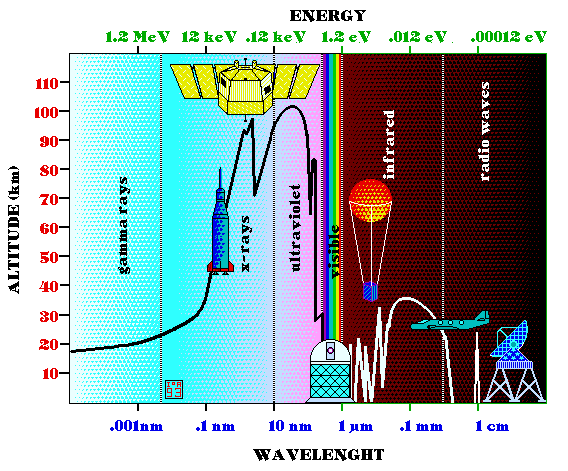Scientific Goals




Next: Scientific Program
Previous: Program Participants
Up: SAX Home Page
Contents: Table of Contents
Astrophysical theories are based on observations made in the radio, infrared,
visible, ultraviolet, X-ray and gamma-ray wavelength ranges.

A more detailed observation in one or more of these wavelength ranges makes it
possible to check and improve the theories describing a certain cosmic object,
or to develop new theories to explain possible new celestial phenomena.
The characteristics of the X-ray detectors on board SAX will make it possible
to perform a detailed spectroscopic and variability study of X-ray sources with
moderate angular resolution (about 1 arcmin) in the energy range from 0.1 to
300 keV. SAX will collect new data on known X-ray sources in order to verify
their astrophysical models, extending measurements over a much wider energy
range than previously performed. Moreover, the SAX experiments have a high
sensitivity that should allow the detection of new X-ray sources.
Given the instrument capabilities over a wide energy range, SAX can provide a
significant contribution (and unique contribution for science involving the
exploitation of the wide band) in several areas of X-ray astronomy such as:
- Compact galactic sources; shape and variability of the continuum: narrow
spectral features (iron line, cyclotron lines) as a function of the orbital and
rotational phases. Ultra-soft sources; discovery and study of X-ray transients;
- Active Galactic Nuclei: spectral shape and dynamics of the variable
continuum and of the narrow and broad components from 0.1 to 200 keV in bright
objects (soft excess, warm and cold absorption and related O and Fe edges, iron
line and high energy bump, high energy cut-off); spectral shape of objects down
to 1/20 of 3C273 up to 100-200 keV; spectra of high redshift objects up to 10
keV;
- Clusters of galaxies: spatially resolved spectra of nearby objects and
the study of temperature gradients and cooling flows; chemical composition and
temperature distribution as a function of redshift;
- Supernova remnants: spatially resolved spectra of extended remnants;
spectra of Magellanic Cloud remnants;
- Normal galaxies: spectra from 0.1 to 10 keV of the extended emission;
- Stars: multi-temperature spectra of stellar coronae from 0.1 to 10 keV;
This file was last modified on Wednesday, 02-Sep-1998 17:28:55 CEST
by Mauro Orlandini




Next: Scientific Program
Previous: Program Participants
Up: SAX Home Page
Contents: Table of Contents

